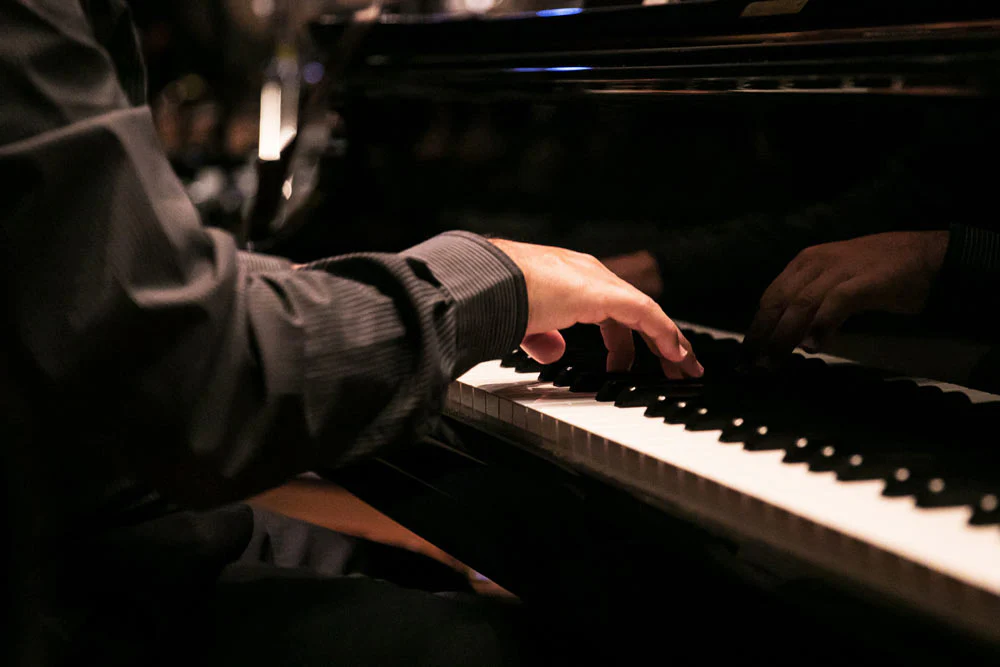
Find Your Perfect Piano
Click here to get expert guidance
Baldwin Model M Satin Walnut Grand Piano w/ bench -Brand: Baldwin -Model: Model M -Serial # 247382 -Finish: Satin Walnut -Condition: Very Good...
View full detailsSojin Polished Mahogany Baby Grand Piano -Brand: Sojin -Serial #: G024349 -Finish: Polished Mahogany -Condition: Very Good Built in 1964 but late...
View full detailsYoung Chang TG-150 Polished Baby Grand Piano -Brand: Young Chang -Model: G-150 -Serial #: G062850 -Finish: Satin Ebony -Condition: Very Good Cons...
View full detailsKawai 5'11" GX-2 BLAK Polished Ebony Grand Piano w/ QRS System -Brand: Kawai -Model: GX-2 BLAK w/ QRS System -Serial #: 2772458 -Finish: Polished ...
View full detailsYamaha GB1 Grand Piano ' Polished Mahogany -Brand: Yamaha -Model: GB1 -Serial #: J2110291 -Finish: Polished Mahogany -Condition: Very Good Ori...
View full detailsKawai RX-5A Polished Ebony Chamber Grand Piano -Brand: Kawai -Model: RX-5A -Serial #: 2420181 -Finish: Polished Ebony -Condition: Excellent - Reco...
View full detailsKawai RX-3A Polished Ebony Professional Grand Piano -Brand: Kawai -Model: RX*3A -Serial #: 2422158 -Finish: Polished Ebony -Condition: Excellent -...
View full detailsYamaha C6 7' Conservatory Collection Polished Ebony Grand Piano This piano has been reconditioned This gently played reconditioned Yamaha C6 Cons...
View full detailsKawai 6'1" GS-30 Grand Piano -Brand: Kawai -Model: GS-30 -Serial # 1317177P -Finish: Polished Ebony -Condition: Very Good Over the past 90 ye...
View full detailsYoung Chang 5'2" G157 Grand PianoModel G157Size: 5'2"-Serial #G082138-Finish: Satin Ebony-Condition: Very GoodThe Young Chang 5'2" G157 Grand Piano...
View full detailsMartin D-42 Special Spruce/Rosewood Acoustic Guitar In conjunction with former Martin employee Dick Boak, Martin Guitar is proud to introduce a st...
View full detailsMartin D-45 Dreadnought Acoustic Guitar Spruce/Rosewood The D-45 is a decked out Dreadnought in Martin's Standard Series. It is the most ornate of...
View full detailsAlamo Music selected this guitar, "Catch 27" at the 2024 NAMM Catch Event, Taylor's premier showcase for unique customs. This guitar sports a strik...
View full detailsMartin D18 Authentic 1937 Spruce VTS/Mahogany Acoustic Guitar - Aged This Authentic Series replication of a 1937 D-18 stays true to the original w...
View full detailsTaylor Custom Grand Auditorium Factor Visit Selected Woods - Sinker Redwood/Bocote This guitar is a special custom built Grand Auditorium that we ...
View full detailsTaylor Custom Grand Concert 12-fret Factory Visit Hand Picked woods - Lutz Spruce/Honduran Rosewood This guitar is a special custom built Grand Co...
View full detailsCastedosa Marianna Semi-Hollow Electric Guitar - Aged Black SPECIFICATIONS: BODY MATERIAL: Alder BODY STYLE: Marianna BODY TOP: Alder PICKUP ROUTE...
View full detailsPre-Owned Santa Cruz 00 Skye Adirondack/Cocobolo Acoustic-Electric Guitar Comes with original Ameritage Santa Cruz hardshell case. Please inquire ...
View full detailsMartin D-42 Modern Deluxe Spruce/Rosewood Acoustic Guitar The D-42 Modern Deluxe is a new take on Martin Vintage. This guitar is packed with custo...
View full details{"one"=>"Select 2 or 3 items to compare", "other"=>"{{ count }} of 3 items selected"}